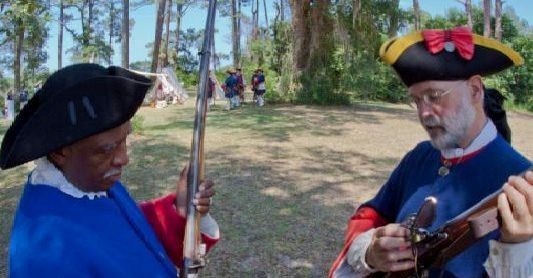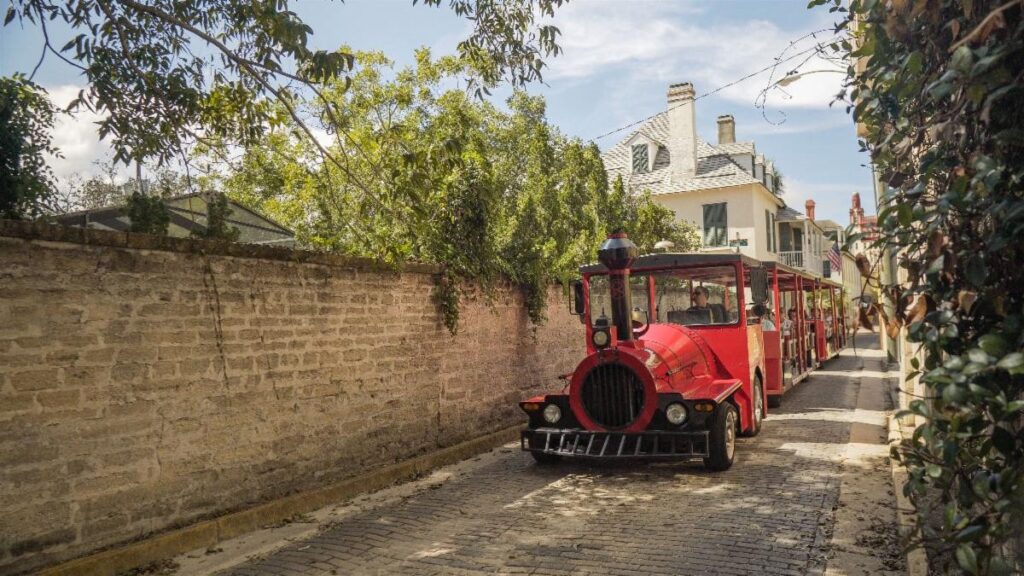Versión en Español Aquí
The Battle of Bloody Mose on June 28 tells the story of the occupants’ courageous skirmish with invaders

St. Augustine, Fla. (June 10, 2025) – Every June, Fort Mose Historic State Park hums with anticipation, as the Battle of Bloody Mose tells the story of the fort’s brave military action against the invading British forces. This year, the battleground has become even more authentic as the Florida State Park celebrates the completion of a replica fort.
The settlement of Garcia Real de Santa Theresa de Mose, now referred to as Fort Mose Historic State Park, was established in 1738 as the first legally sanctioned free Black settlement in North America. Fort Mose’s inhabitants were mainly slaves of West African origin who escaped from the British colonies of South Carolina and Georgia. It was established as a military and residential community, guarding the northern boundary of Spanish St. Augustine. Almost 250 years later, the site was discovered during an archaeological dig led by the Florida Museum of Natural History, but the fort structure had long ago succumbed to the natural environment. Now stewarded by the Florida State Park Service, visitors have asked the same question for decades: “Where is the fort?”
Now after 30 years of work, Fort Mose has once again become a tangible structure. The replica fort is built with an enforced concrete frame replicating wood and encompassing three stories. “This fort is a tribute to the people who were brave enough to act and determined enough to travel on only the hope that free territory was waiting for them,” says Charles Ellis, President of the Fort Mose Historical Society.
The construction of this new centerpiece of the park cost $3 million, raised through grants, donations, and fundraising events like the annual Fort Mose Jazz & Blues Series.

On June 28, living historians representing free Black Fort Mose militia, Spanish militia, and Native American allies will fight the British and Scottish invaders at the Battle of Bloody Mose. Part of St. Augustine’s Hispanic Heritage, this is a reenactment of a battle that took place on June 26, 1740, during General Oglethorpe’s invasion of Spanish Florida and resulted in the end of his campaign. During the Battle of Bloody Mose, the new fort will be open with extended hours. Additionally, on June 27, there will be an encampment and tours of the fort from 6-8 p.m.
Admission to Fort Mose Historic State Park is $2 per person. The park is open Thursday through Monday, from 9 a.m. to 5 p.m. The guided tours of the fort are at 10 a.m. and 1 p.m. Monthly events include militia muster reenactments on the first Saturday of each month.
Fort Mose is just one of the exciting Must-Do Experience found on Florida’s Historic Coast. Check out more of the charm with the award-winning Must-Do Experiences video series, which shines a light on the best things to do, see, and experience.
Located midway between Daytona Beach and Jacksonville, Florida’s Historic Coast includes historic St. Augustine, the outstanding golf and seaside elegance of Ponte Vedra, the rural beauty of Hastings, Elkton, St. Johns, and 42 miles of pristine Atlantic beaches. Visitor Information Centers are located at 10 Castillo Drive, St. Augustine; 200 Solana Rd. Suite B, Ponte Vedra Beach: and at the St. Johns County Beach Pier Park, 350 A1A Beach Blvd., St. Augustine Beach. For advance travel information, call 1.800.653.2489 or go to the Visitors and Convention Bureau website at www.FloridasHistoricCoast.com.











